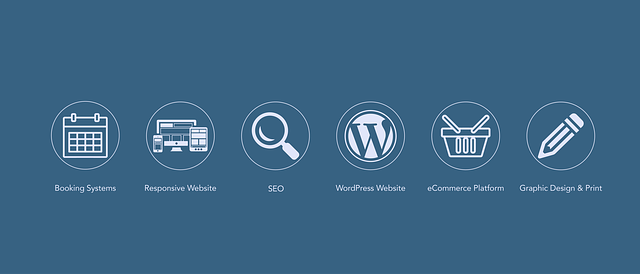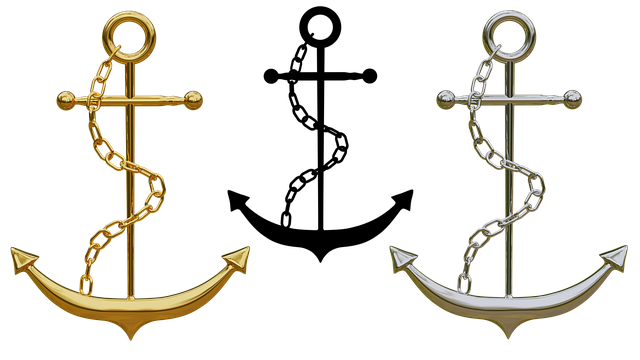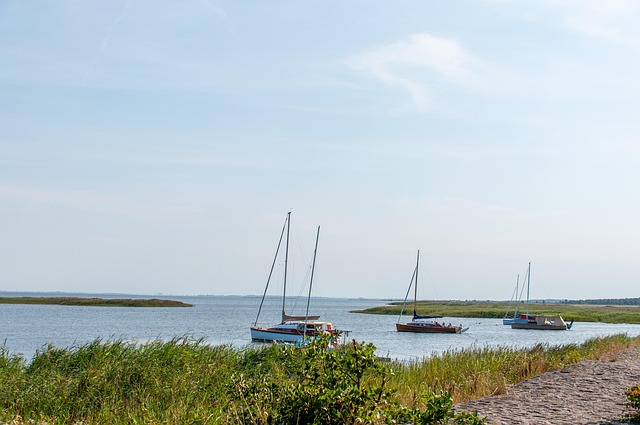SEO internal linking, especially through optimize anchor text for WordPress, is a powerful tool for content-rich websites. It aids search engines in understanding page hierarchy and relevance by using descriptive, relevant, keyword-rich anchor text that accurately reflects linked pages' content. This strategy enhances user experience, improves click-through rates, boosts SEO performance, and guides visitors through related resources on WordPress sites. Best practices involve identifying relevant pages, optimizing anchor text naturally, avoiding keyword stuffing, and ensuring contextual relevancy. Measuring impact using tools like Google Search Console and analytics platforms allows for adjustments to enhance SEO benefits and improve user engagement. Advanced techniques include diversifying with exact match keywords, partial match phrases, and branded anchors.
In the competitive digital landscape, content-heavy websites strive to enhance user experience and search engine rankings through strategic SEO internal linking. This comprehensive guide optimizes your approach by teaching you how to effectively implement internal links on WordPress, leveraging powerful techniques like anchor text optimization. From understanding the fundamentals of SEO internal linking to identifying relevant pages and advanced strategies, this blog post equips you with the tools to elevate your website’s performance.
- Understanding SEO Internal Linking for Content-Heavy Sites
- The Role of Anchor Text in Optimized Internal Links
- Identifying Relevant Pages for Internal Linking
- Best Practices for Implementing Internal Links on WordPress
- Measuring the Impact of Optimized Internal Linking Strategy
- Advanced Techniques for Effective Anchor Text Optimization
Understanding SEO Internal Linking for Content-Heavy Sites

SEO internal linking is a powerful strategy for content-heavy sites as it helps search engines understand the hierarchy and relevance of your pages. By strategically placing links within your content, you can guide users and algorithms alike, enhancing the overall user experience and boosting your site’s visibility in search results. For WordPress sites, optimizing anchor text is crucial to this process. Anchor text refers to the clickable part of a link, and it should be chosen carefully to convey the context and destination of the linked page.
When implementing SEO internal linking, focus on using descriptive and relevant anchor text. Instead of generic phrases like “click here” or “this post,” incorporate keywords that naturally reflect the content of the target page. For instance, if you’re linking to a tutorial about ‘WordPress SEO optimization tips,’ using “Learn WordPress SEO Optimization Tips” as your anchor text can significantly improve both user and search engine comprehension. Optimize anchor text by keeping it concise, specific, and aligned with the topic at hand—this is where the true art of link building lies.
The Role of Anchor Text in Optimized Internal Links

The choice of anchor text is a critical aspect of creating optimized internal links for content-rich websites. Anchor text refers to the visible or clickable word(s) that hyperlink from one page to another, and it plays a significant role in search engine optimization (SEO). When crafting anchor text for WordPress sites, the primary goal is to ensure it accurately represents the target page’s content while keeping the link natural and relevant. For instance, using “learn more about SEO strategies” as an anchor text would be more beneficial than simply “page 2.” This strategy not only provides clarity to users but also helps search engines understand the context of the linked content.
An effective optimize anchor text tutorial suggests using descriptive and specific keywords that accurately describe the target page’s focus. For WordPress sites, this might involve incorporating long-tail keywords or phrases that are less competitive and more tailored to user intent. By optimizing anchor text in this manner, you can enhance both the click-through rate (CTR) from internal links and improve overall SEO performance. This practice contributes to a better user experience as it guides visitors naturally through your site’s content, encouraging them to explore related resources.
Identifying Relevant Pages for Internal Linking

Identifying relevant pages for internal linking is a crucial step in any SEO strategy, especially for content-heavy sites. Start by analyzing your site’s architecture and understanding how users navigate through your content. Tools like Google Analytics and search engine crawlers can provide insights into high-traffic pages and popular content clusters. Look for pages that are closely related in theme or topic, as these make ideal candidates for internal links. For instance, if you have a blog post about “WordPress SEO tips,” consider linking to other articles within your site that delve deeper into specific aspects like optimizing meta tags or using custom permalinks.
When optimizing anchor text for WordPress, keep it natural and contextually relevant. Avoid keyword stuffing and use descriptive language that accurately reflects the linked page’s content. An optimize anchor text tutorial can guide you on crafting effective links. Remember, the goal is to enhance user experience by providing seamless navigation and allowing search engines to better understand your site’s hierarchy. By strategically placing internal links, you can improve the visibility of relevant content, boost page authority, and ultimately, enhance your site’s overall SEO performance.
Best Practices for Implementing Internal Links on WordPress

When implementing internal links on WordPress sites with a rich content library, following best practices ensures optimal SEO benefits. Optimize anchor text strategically for each link to convey context and relevance to both users and search engines. Instead of generic phrases like “click here,” use descriptive keywords that align with the target page’s content. This practice not only improves user experience but also signals to search algorithms that your site is well-connected and authoritative.
For effective optimize anchor text strategy, start by identifying key terms relevant to each post or page. Incorporate these terms naturally into the anchor text, keeping a balance with other keywords throughout the content. Internal links should be contextual; link “Best Practices for SEO” in one paragraph to another section on your site titled “Maximizing Keyword Optimization” rather than a generic link to your homepage. This optimize anchor text tips foster a seamless user journey while boosting internal page rankings, ultimately contributing to better overall website performance.
Measuring the Impact of Optimized Internal Linking Strategy

Measuring the impact of an optimized internal linking strategy is a crucial step to ensure your efforts are driving meaningful results for your content-heavy site. By utilizing tools like Google Search Console and analytics platforms, you can track key metrics such as click-through rates (CTRs) from internal links, time spent on page, and bounce rates. These insights allow you to identify high-performing pages and areas that need improvement. For instance, a WordPress site optimized for anchor text might see increased organic traffic as users navigate through relevant content, leading to higher rankings and better user engagement.
An effective optimize anchor text tutorial involves creating a strategic network of internal links that naturally guide readers while also signaling search engines about the relevance and importance of your content. This strategy, when properly executed, can lead to significant SEO benefits, including improved site architecture, reduced bounce rates, and enhanced overall performance. Regularly reviewing and adjusting your optimize anchor text optimization efforts based on data-driven insights will help you maintain a competitive edge in today’s digital landscape.
Advanced Techniques for Effective Anchor Text Optimization

When optimizing anchor text for WordPress sites with rich content, it’s crucial to go beyond basic practices and explore advanced techniques. One such technique is using contextual anchor texts that closely mirror the target page’s content. This approach not only enhances user experience but also signals search engines about the relevance of the link. For instance, if you’re linking to a post about “SEO best practices,” use anchor text like “SEO best practices for 2023” or “an in-depth guide to SEO optimization.”
Additionally, diversifying your anchor text strategy is essential. Avoid using generic terms like “click here” or “read more.” Instead, employ a mix of exact match keywords, partial match phrases, and branded anchors. For example, consider using “Learn more about WordPress SEO” or “check out our WordPress optimization tips.” Such variations contribute to a balanced profile, making your site appear more natural in search engine results while effectively guiding users and search bots to relevant content.
